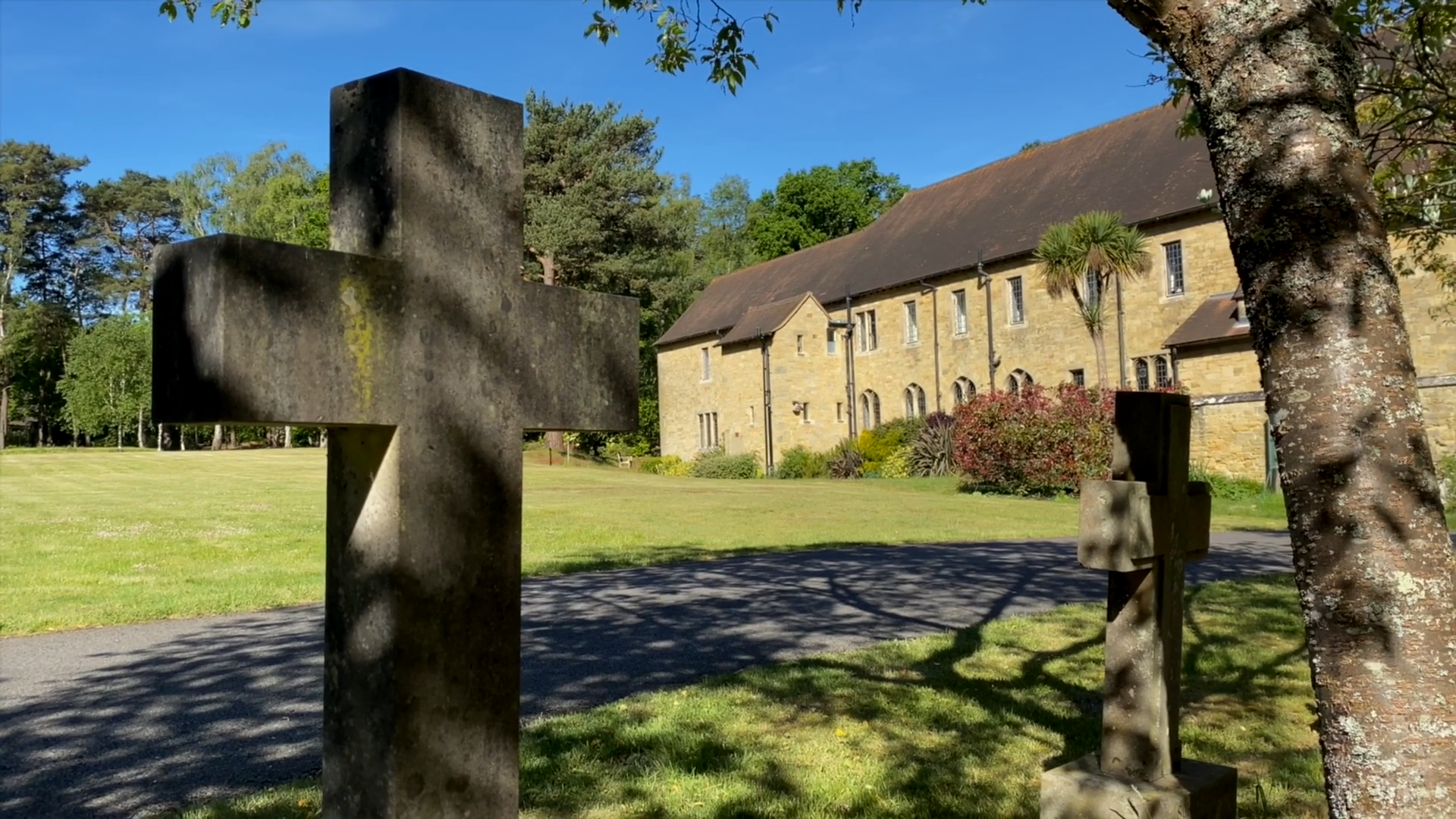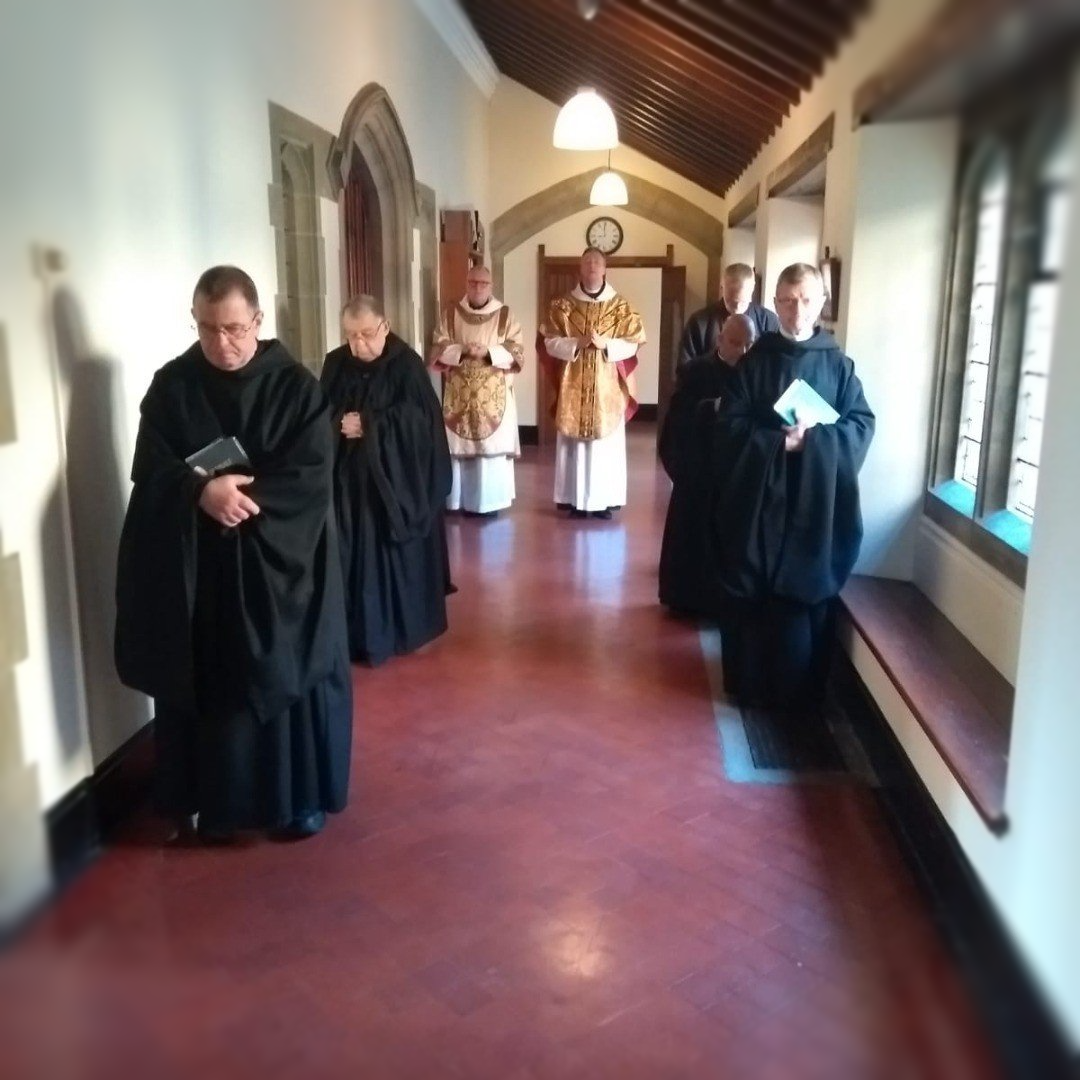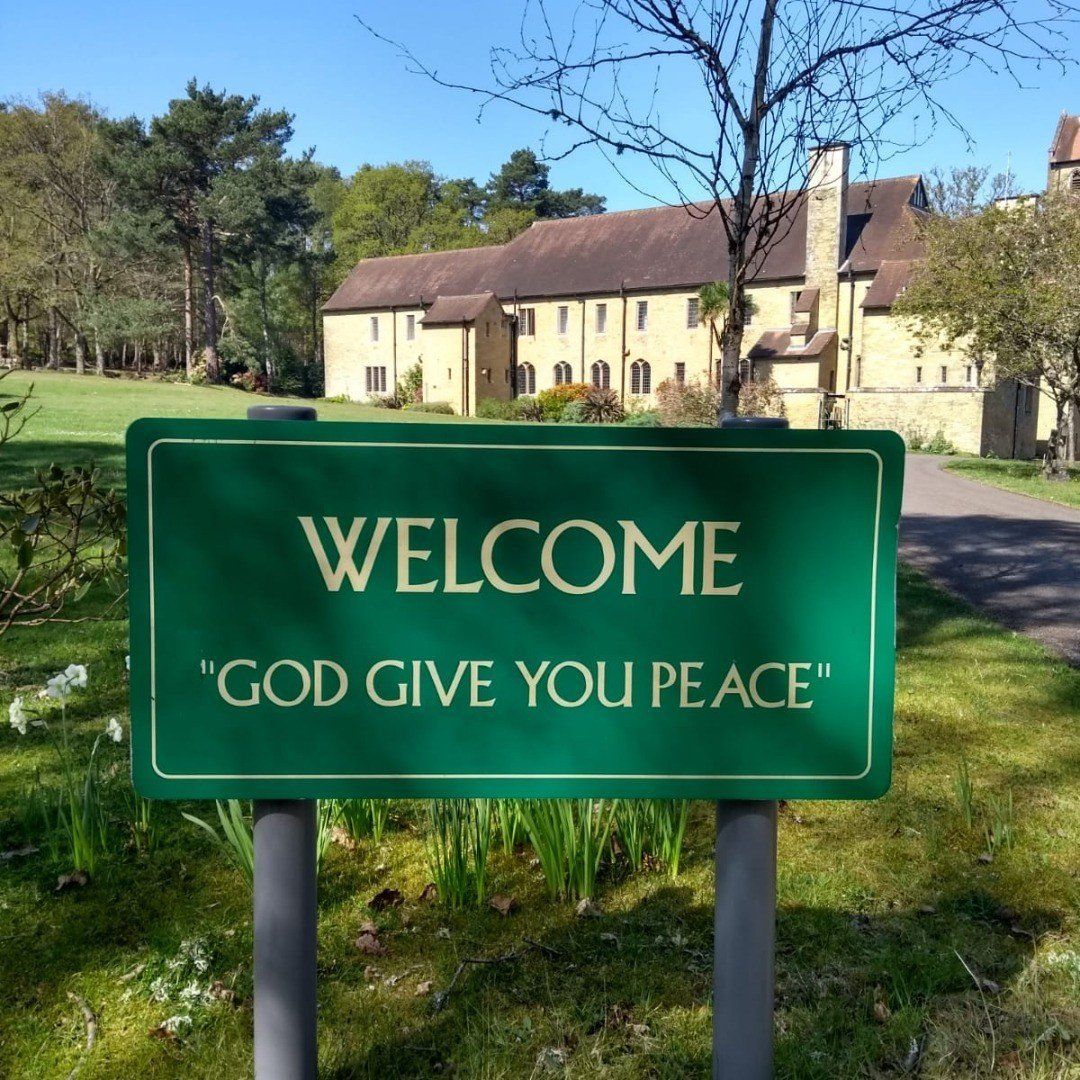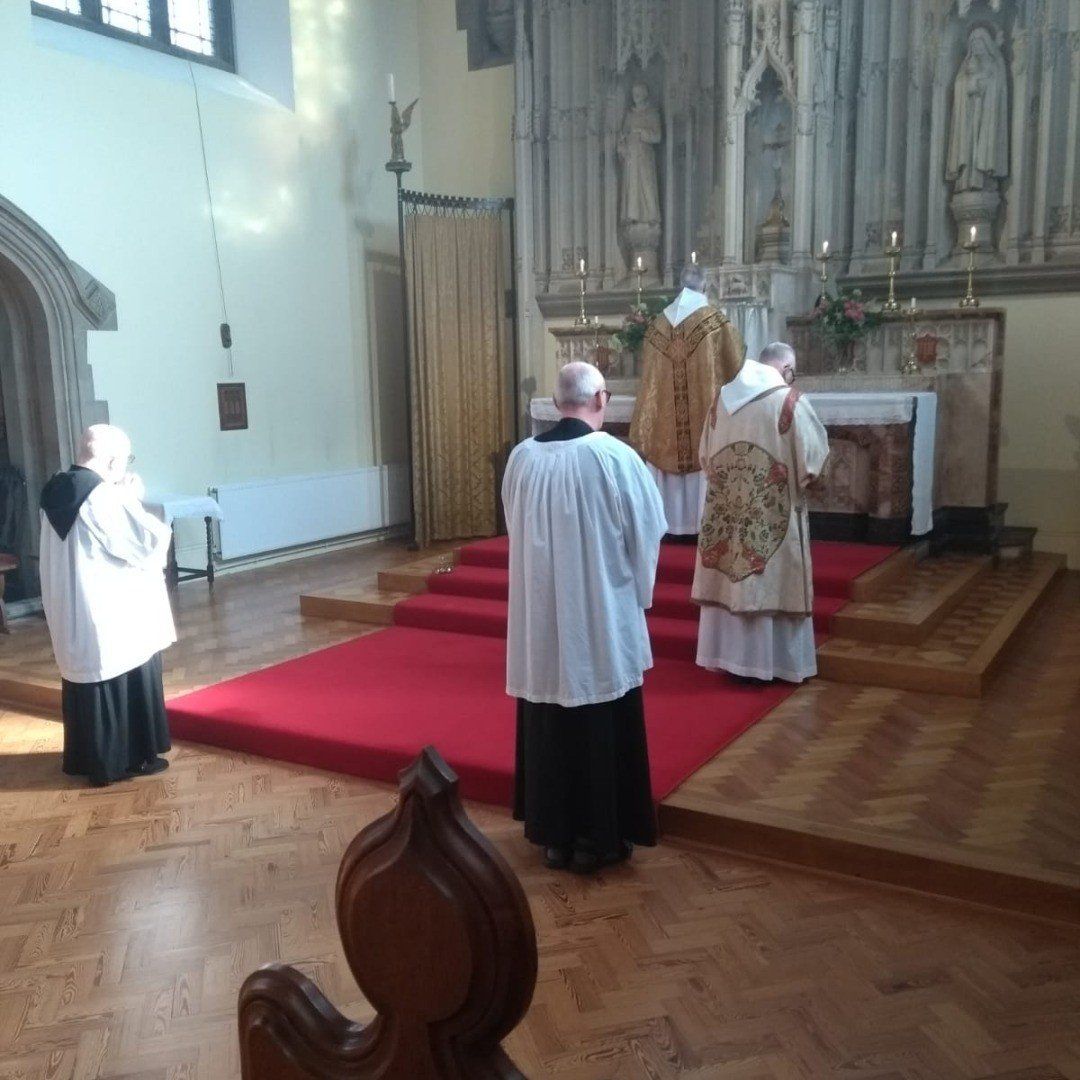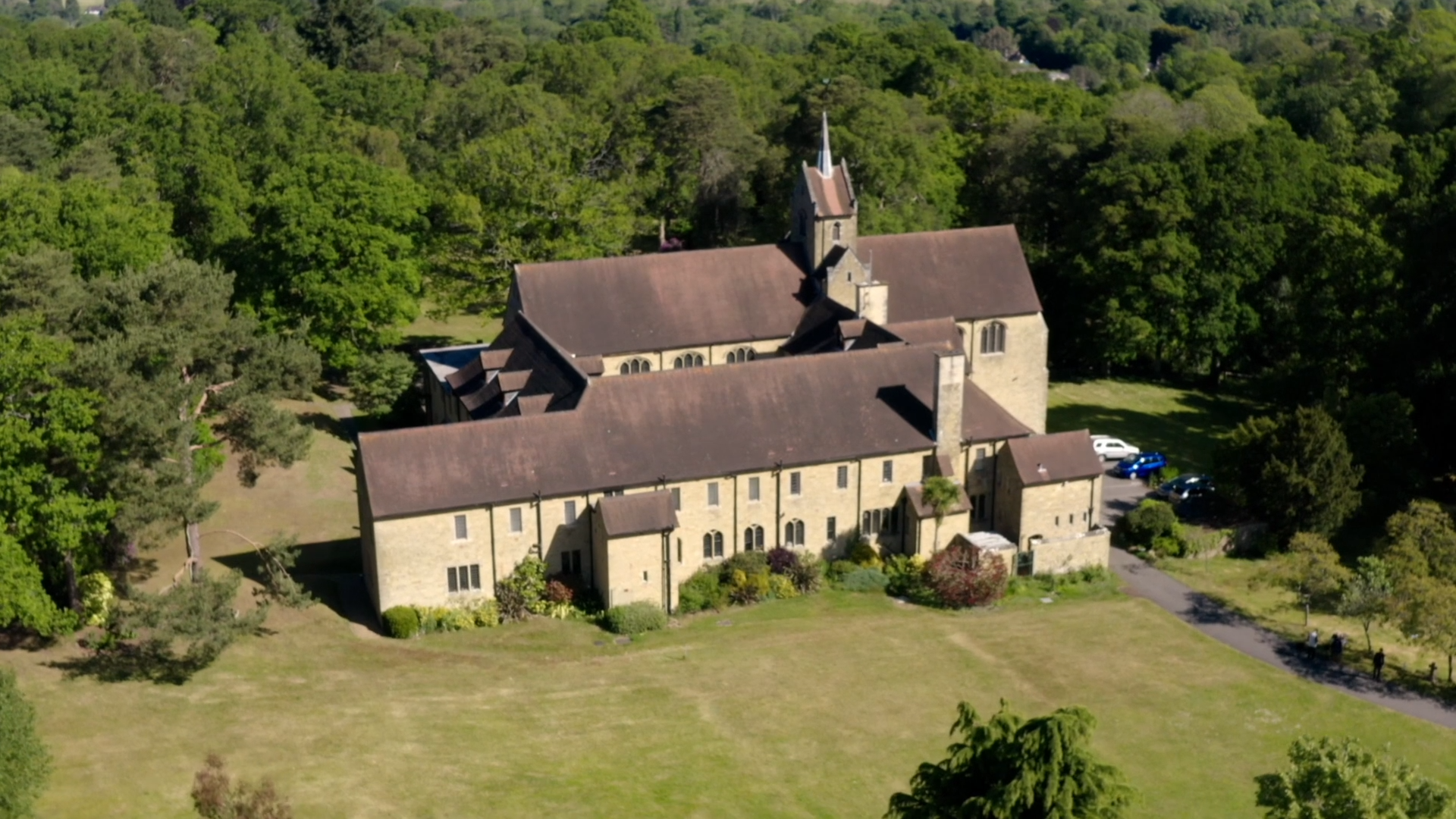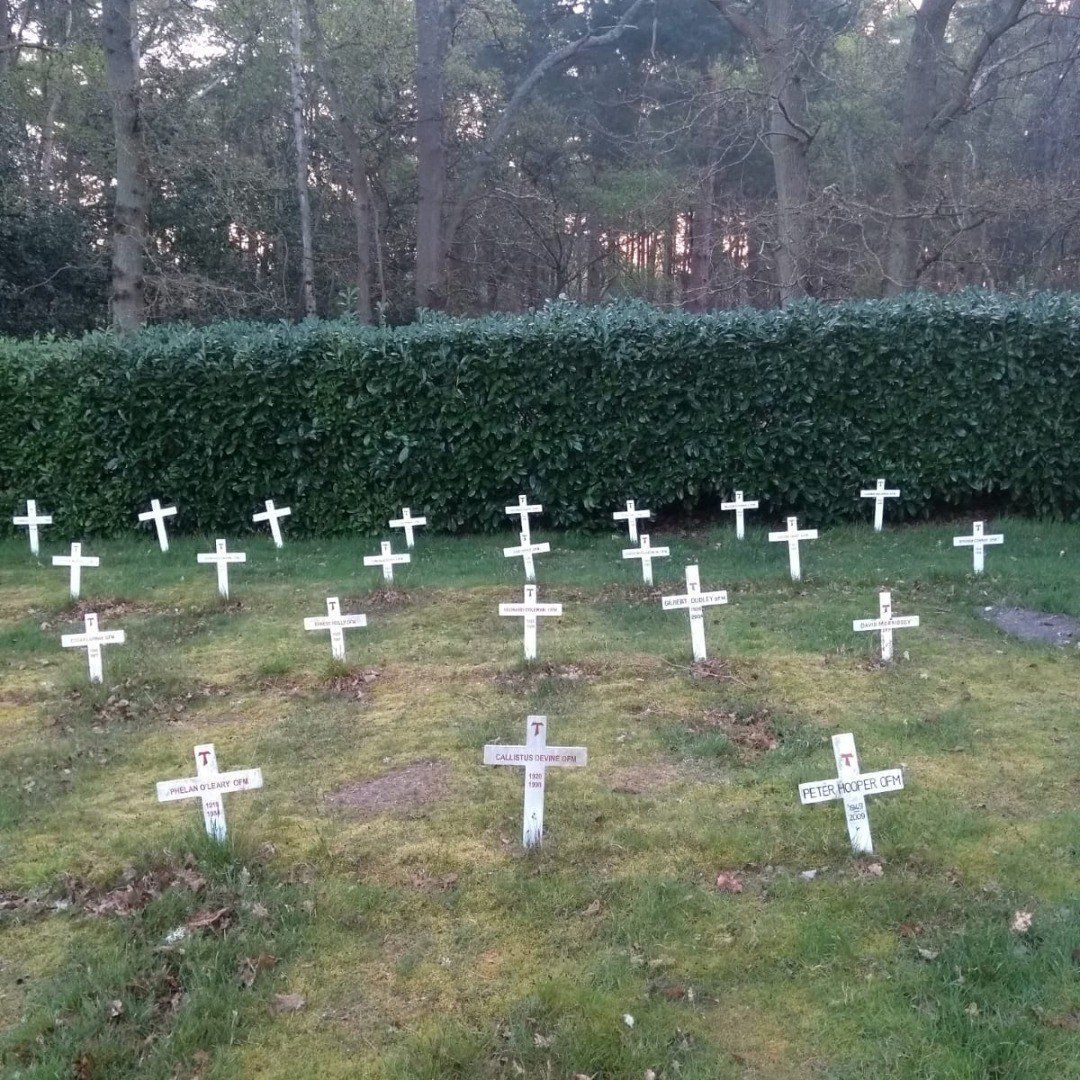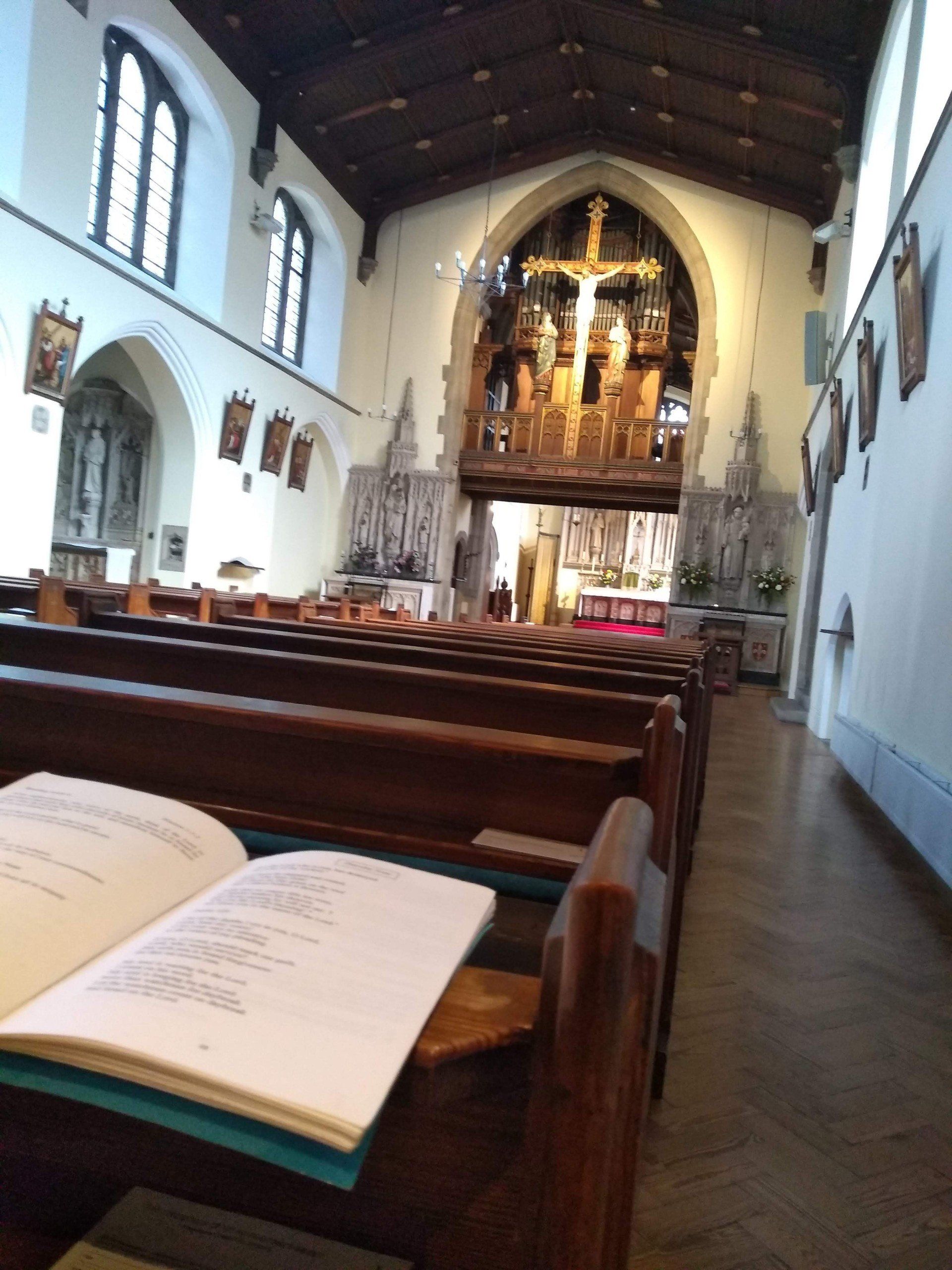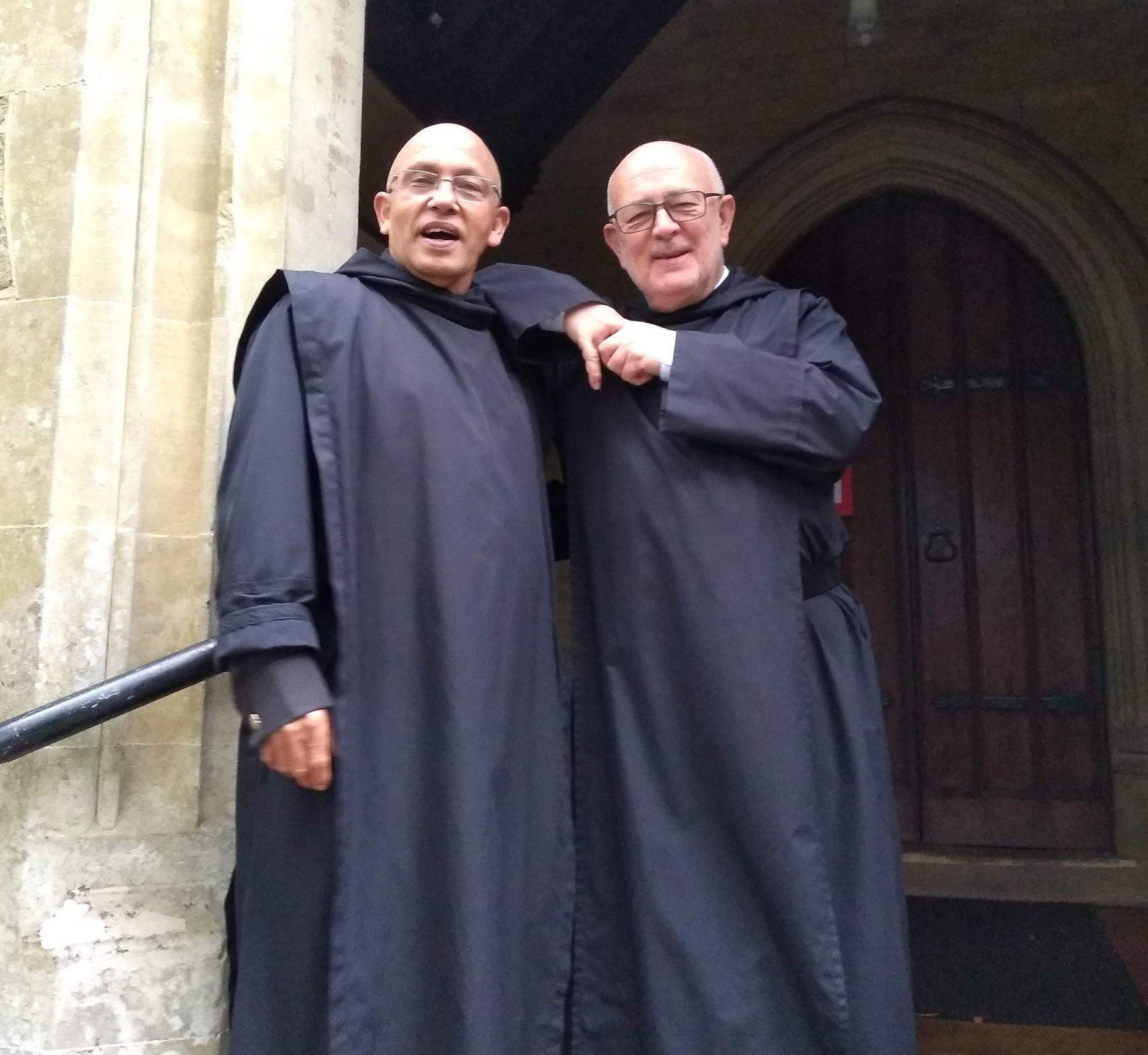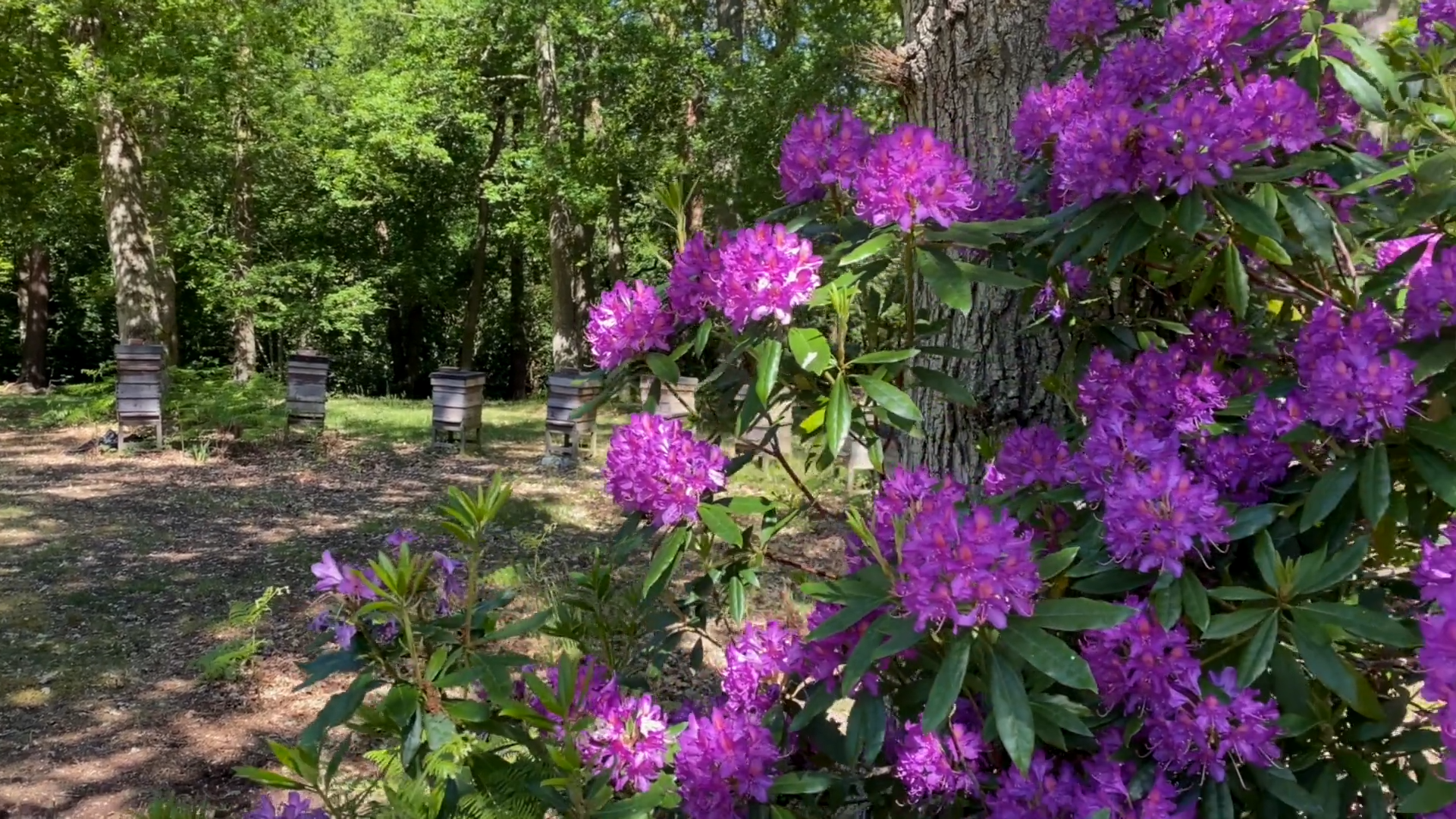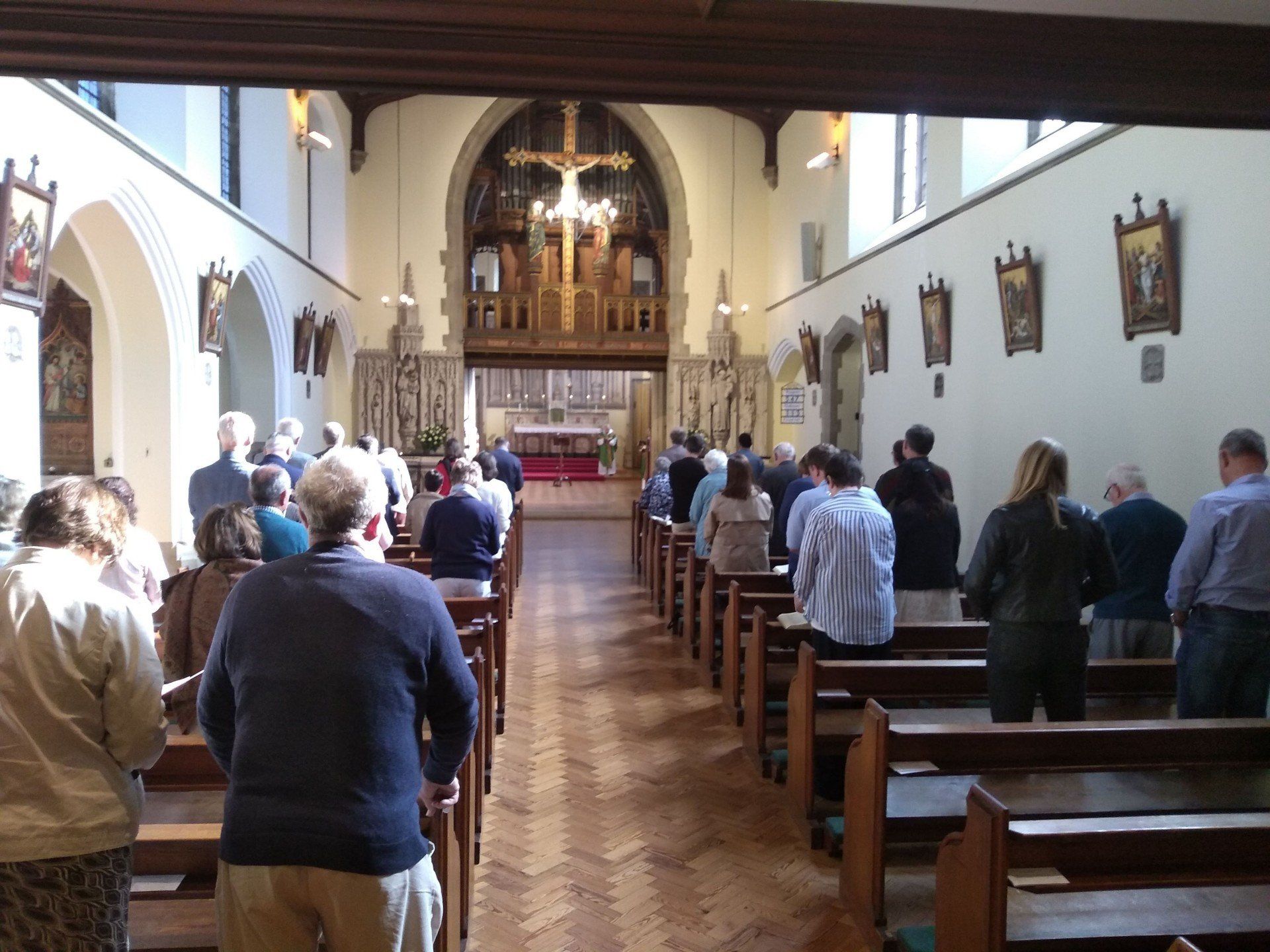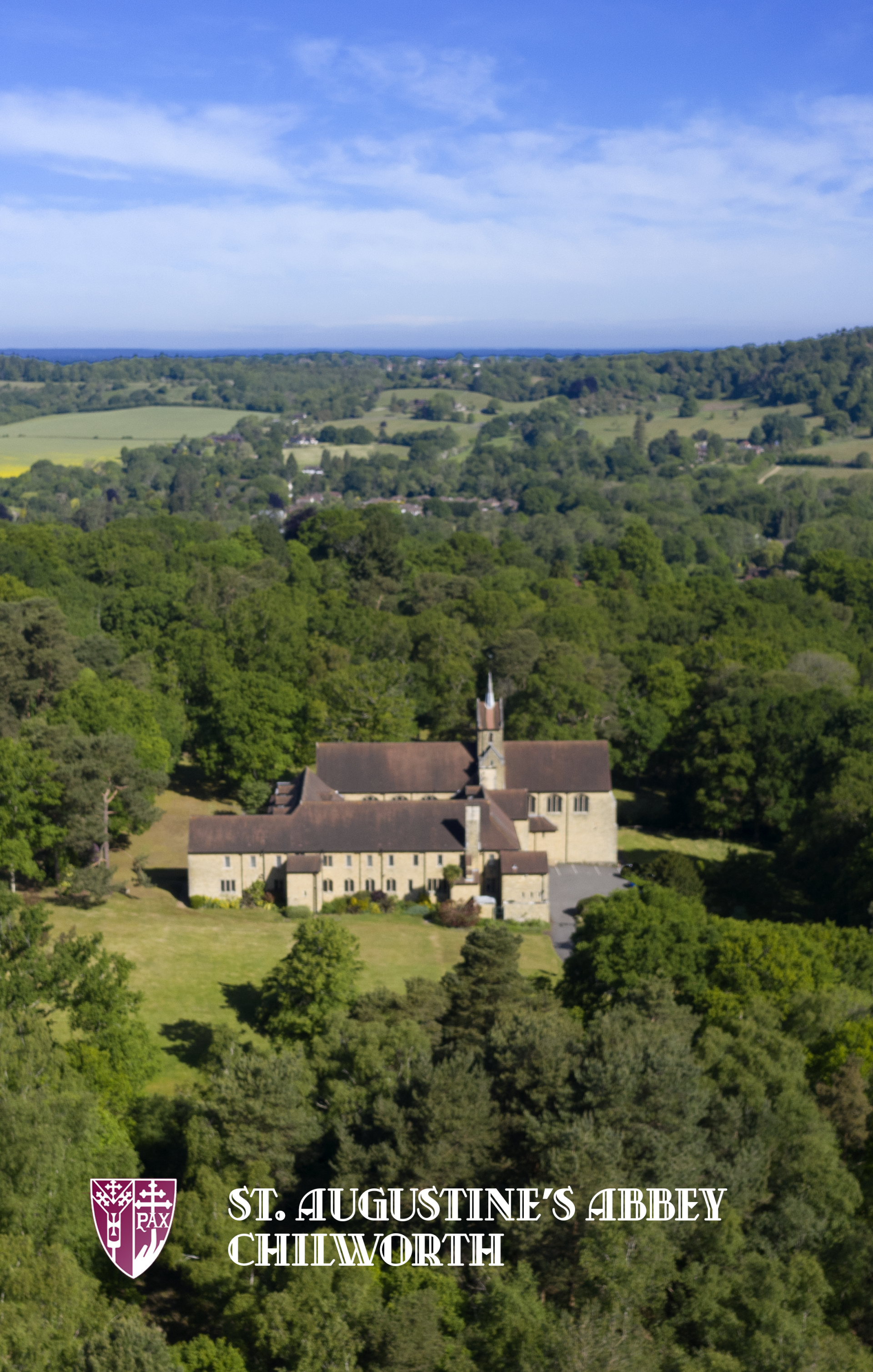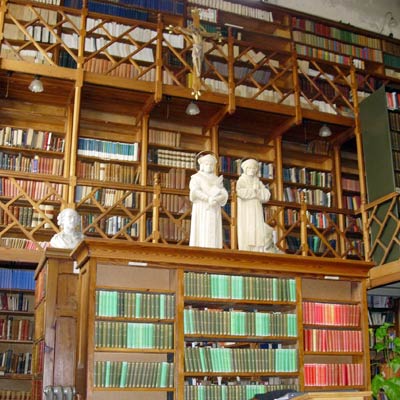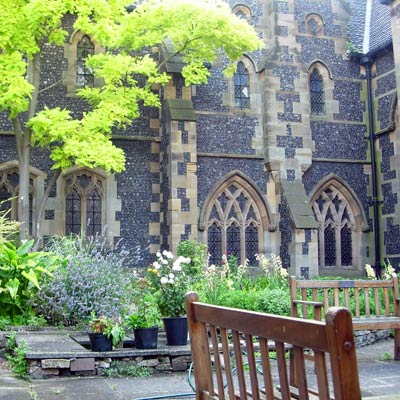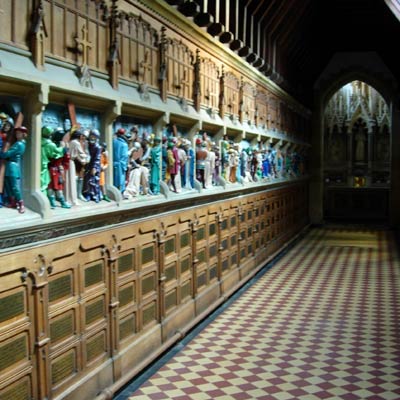About St Augustine's Abbey, Chilworth
Home of the Chilworth Benedictines
St Augustine's Abbey, Chilworth is one of four Benedictine monasteries from the Order of Saint Benedict in the UK forming the English Province of the international Benedictine Congregation of the Subiaco Cassinese Congregation. Other monasteries from other Congregations of the Order of Saint Benedict exist in the UK, for example those of the English Benedictine Congregation (Ampleforth, Downside, Worth, etc). We are located within the Roman Catholic Diocese of Arundel and Brighton. Our community's foundation and first home was in Ramsgate (formerly St Augustine's Abbey, Ramsgate, 1856 - 2011) where we resided for over 150 years before relocating to our new home here in Chilworth in 2011.Our Abbey community was founded as a result of the invitation made by Bishop Thomas Grant, the first Bishop of Southwark, to the Italian abbot Dom Pietro Casaretto, to send monks from St Benedict's own monastery at Subiaco to undertake a mission at Ramsgate.By 1856, arrangements between Bishop Grant and Abbot Casaretto were concluded and the first monk, Dom Wilfrid Alcock, arrived to take charge at the Ramsgate mission and our initial community home which had been made possible thanks to the building of a Gothic church by the famous Gothic Revivalist architect Augustus Welby Pugin, which was donated to the Diocese of Southwark before his premature death in 1852.The Community relocated to our current home (Chilworth near Guildford in Surrey) in November 2011 and we now live work and pray in what was a Franciscan Friary of the Order of Friars Minor (OFMs).
History
-
1892 - Franciscan Friars move in
The first Friars took up residence in 1892. While most Franciscan friaries are to be found in urban settings, this friary was built in a relatively quiet place to be the Novitiate for the order. Every friar spends his first year of Franciscan life as a Novice, and the purpose of that year is to make a break with the previous way of life, and to embrace the new way of living. In those days, novices did not generally have holidays or meet with their families, although they did write, and could receive letters.
Since 1892, therefore, for the next hundred years or so, every man who had entered this particular branch of the Franciscan Order had spent his first year at Chilworth.
-
1945 - Pastoral care of the Parish
In 1945, the Friars were asked to take on the pastoral care of a newly formed Catholic parish, largely a rural area between Guildford and Dorking. They had already been celebrating Mass and other Sacraments for small groups of Catholics in the area.
From then on, a small congregation gathered at the Friary on Sundays and since the 1970s the congregation grew to a full church for the main Mass on Sunday morning. A highlight for many parishoners and visitors, somewhat to the pleasant surprise of many, was the annual Franciscan Mass for the blessing of animals. Local legend talks very fondly of horses, dogs, cats, pet rabbits and more attending in large numbers with their human owners.
Another chapel was built at Gomshall and opened in 1964 to accommodate parishioners at that end of the parish.
It may be of interest to hear of one small claim to fame in which the Friary rejoiced. The music publisher Joseph Larway visited Chilworth when his brother, Edgar, was in the Community. With him was the composer, Albert Ketelby, and it is said he was inspired to compose his well known 'In a Monastery Garden' light classical piece on that occasion.
For many years, the Friary, apart from the church, was 'enclosed', which meant that members of the public were not allowed in to the residential areas, except for maintenance work or emergencies. With the growth of the parish and the renewal of the life of the friars after the Second Vatican Council in the 1960s, efforts were made to open up the Friary, so that it became a sort of pastoral centre for the parish and for other groups who wanted to come for meetings or quiet days. It was at this time that the annual Garden Fête was launched, first as a parish social celebration but later as an important fundraising event for the Friary, parish and other charities. Some of the major refurbishment work of recent years has been partly funded in this way.
-
2010 - Friars' withdrawal
The early 2000s sadly saw the numbers of Friars decline in the United Kingdom and generally in Western Europe. This fact, taken with the ageing of many of the brethren, had led the Friars on more than one occasion to review their commitments, and to withdraw from Friaries.
All the Friars were invited to take part in a period of discernment and prayers and eventually the Minister Provincial, who is in charge of the Friars in the United Kingdom, together with his Council, decided that the Friars would withdraw from Chilworth. This decision was made early in 2010 and in the same year, the Friars left the Friary for good. A sad day indeed for many, many people.
Prayers continue to this day for the dear Friars and their Order. They are still very actively interested in encouraging men to become Friars; please visit http://www.friar.org Over 80 deceased Friars are buried at the St Augustine's Abbey, Chilworth and their graves are marked by simple white wooden crosses in the humble Franciscan tradition, now cared for by their living Benedictine monk successors. May those who have died rest in peace.
-
2011 - Chilworth welcomes the Benedictines
In 2011, the Bennedictine monks from St Augustine's Abbey, Ramsgate in Kent move to the vacant Friary at Chilworth where they establish their community. The monks very much welcome members of the public to visit and pray with them every day of the year although they do not run a parish. The monks actively welcome questions and visits from men considering their vocation.





